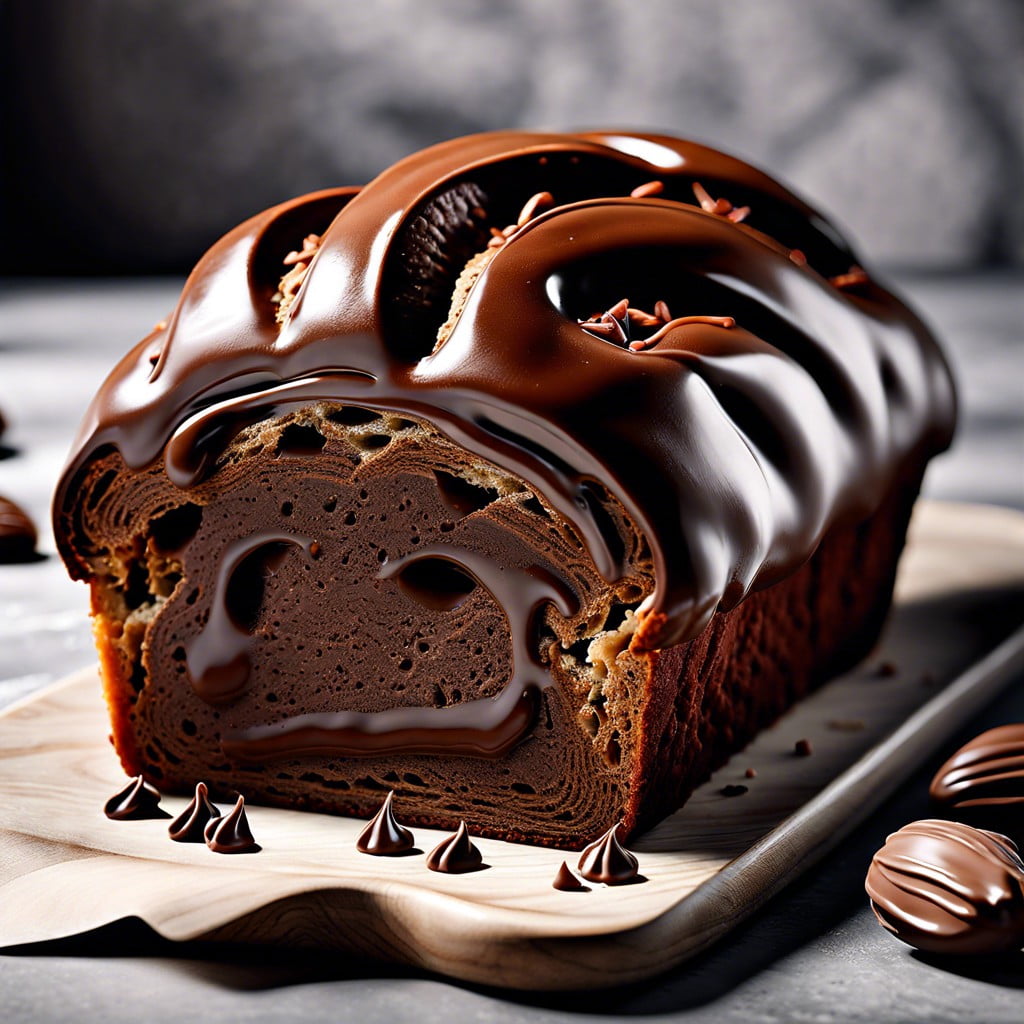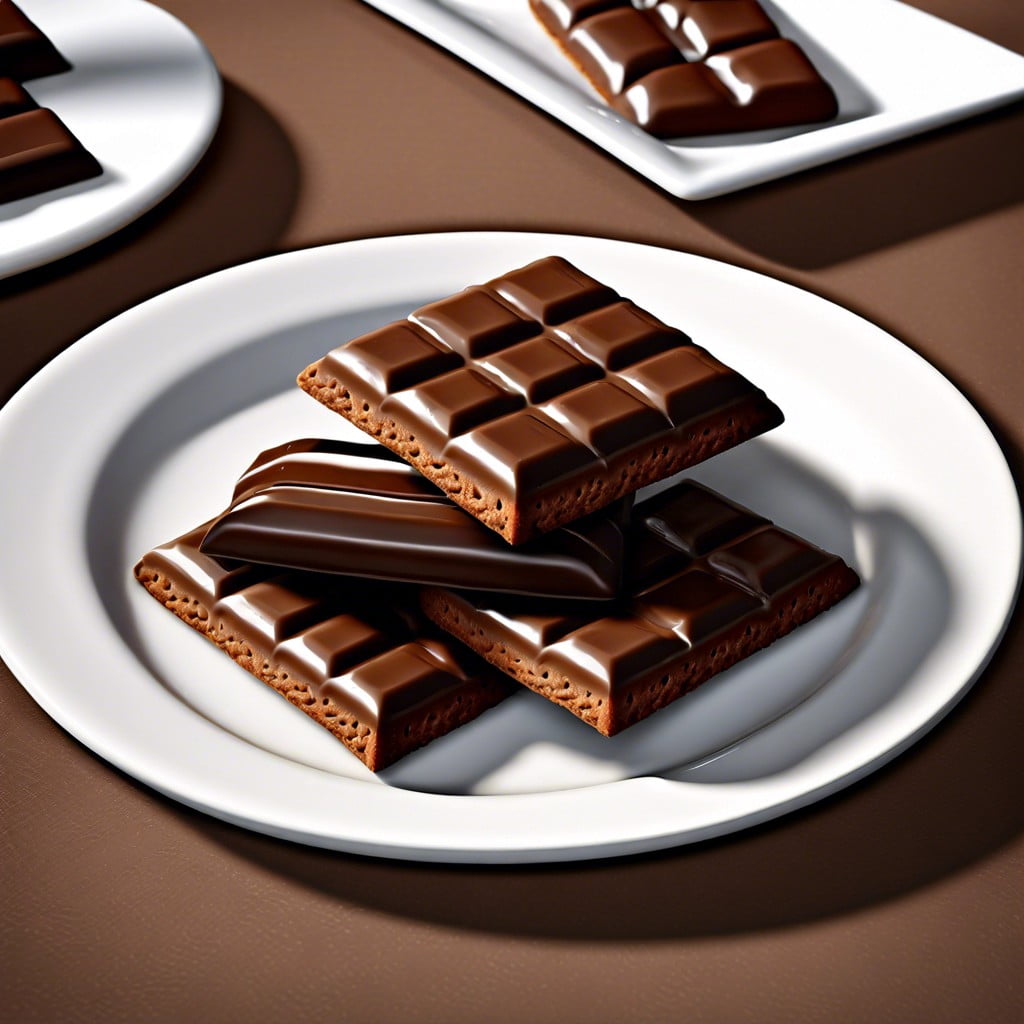Explore the process of making Gianduja chocolate, a delectable blend of hazelnuts and rich cocoa.
Gianduja chocolate, a delightful blend of smooth chocolate and rich hazelnut paste, originates from Italy and is a treat for the taste buds.
This article will guide you step-by-step on how to create this luxurious confection at home.
With clear instructions on selecting the right quality of ingredients, to the precise method of blending them, it ensures that you’ll be able to recreate the authentic taste of gianduja chocolate.
Whether you’re a seasoned chocolatier or a beginner in the world of sweets, this guide will provide all the necessary details to help you make the perfect gianduja chocolate.
Key takeaways:
- Use quality dark chocolate with 70% cocoa content for authentic flavor.
- Essential ingredients: dark chocolate, hazelnuts, icing sugar, sunflower oil, sea salt.
- Equipment needed: kitchen scale, chocolate melter, food processor, fine mesh sieve, kitchen thermometer.
- Toast hazelnuts, grind to a paste, melt chocolate, blend together.
- Store Gianduja in airtight container at room temperature.
Inside
Ingredients Needed for Making Gianduja Chocolate

Acquiring the right ingredients is critical to obtaining that trademark, silky Gianduja chocolate. Begin with quality dark chocolate, ideally with about 70% cocoa content, to ensure a delectable bitterness that will balance the sweetness of the other components. Next, dry-roasted hazelnuts are essential, contributing their rich, buttery flavor though they can be replaced by almonds, traditionally used in Italian variants of Gianduja.
Securing more minor but equally crucial components is necessary. Look for icing or confectioner’s sugar, used to sweeten and aid in giving the chocolate that silky texture distinctive of Gianduja. Opt for superior-grade sunflower oil, which will help in combining all the ingredients without overpowering their character. Lastly, add sea salt in your shopping cart — to enhance the chocolate and hazelnut flavors while preventing your Gianduja from tasting overly sweet.
Remember to get a sufficient amount of each ingredient. For a batch decent enough for gift giving or indulgent self-consumption, consider these values: 200g dark chocolate, 200g dry-roasted hazelnuts, 100g icing sugar, 2 tablespoons sunflower oil, and a pinch of sea salt. Adjust as you desire to suit taste preferences.
Equipment Necessary for Gianduja Preparation
To prepare Gianduja chocolate, certain essential tools are required. A kitchen scale will ensure accurate measurements since precision is crucial in chocolate making. A chocolate melter or a microwave will play an important role in the process of tempering, where the aim is to heat the chocolate to a desired ideal temperature.
A food processor or a blender will grind the hazelnuts into a fine paste – a key element of Gianduja chocolate. These ground hazelnuts are combined with the tempered chocolate, creating a delightful mixture.
It is also important to have a fine mesh sieve or a nut grinder for a silky smooth finish. For molding the chocolate, silicone flat molds or classic chocolate bar mold are suggested. Using a flexible spatula can aid in evenly spreading the Gianduja mix into the mold.
Lastly, an important but often overlooked tool is a kitchen thermometer. This will assist in correctly tempering the chocolate, ensuring it reaches the precise temperature.
When it’s time to store the finished product, airtight containers or wrappers are a must to preserve the quality and freshness of the homemade Gianduja.
Step-by-step Process On How to Make Gianduja
Begin by toasting the hazelnuts in the oven at 350°F (175°C) for about 15 minutes until golden and aromatic. Once cooled, rub the hazelnuts in a kitchen towel to remove the skins before grinding them to a fine paste in a food processor.
Meanwhile, chop the dark chocolate into small, manageable pieces. The smaller the chocolate pieces, the easier and more evenly it will melt.
Simultaneously, start melting chocolate. This could be done using a microwave or a double boiler. Microwave the chocolate in intervals of 30 seconds, stirring between each interval to ensure it melts uniformly without burning.
In the case of a double boiler, ensure, the bowl containing chocolate does not touch the boiling water to prevent the chocolate from scorching.
Once the chocolate is melted and the hazelnut paste is ready, blend them in a bowl. Ensure this blend is smooth and has an even texture. Add a pinch of salt to enhance the flavors, making the perfect Gianduja.
Finally, pour the Gianduja into a mold or a flat pan lined with parchment paper. Smoothen the top and allow it to set in a cool, dry place or in the refrigerator until it firms up completely.
Remember, when it comes to chocolate-making, cleanliness is crucial, ensuring there’s no water or moisture since it can wreak havoc on the couverture’s temper, leading to an uneven or grainy texture.
To break the set Gianduja into pieces, use a sharp knife. If any remains, store them properly for later use.
The Stages of Making the Gianduja Mix
Initially, toast the hazelnuts until they become slight gold in color and their skin begins to crack. This process will enhance their flavor. After the toasting, let them cool and remove their skin.
Next, finely grind the hazelnuts in a food processor until they turn into hazelnut butter. It’s important to be careful not to over-process as it can cause the fats to separate, resulting in a greasy mixture.
Combine the hazelnut butter with melted couverture chocolate. Consider using dark, milk, or white chocolate, depending upon personal preference.
Add powdered sugar for sweetness, adjusting the quantity as per taste. Incorporate cocoa powder if a stronger chocolate flavor is desired.
Lastly, ensure that all ingredients are perfectly mixed together. Once the Gianduja blend is smooth and homogeneous, it’s ready for the next step, which is tempering. This mixing process is crucial as it results in a smooth, glossy finish and a crisp snap upon breaking.
Throughout these steps, remember to scrape down the sides of the processor regularly to ensure consistency. Be mindful of the processing time and temperature throughout to preserve the integrity of the chocolate and prevent any mishaps such as seizing or splitting.
How to Temper Chocolate for Gianduja Using the Microwave
Start by chopping the chocolate finely, even-sized pieces melt more uniformly. Take about two-thirds of the chocolate and transfer it to a microwave-safe bowl.
Heat the chocolate in the microwave at 50% power for 30-second intervals. Pause to stir between each interval. Remember, chocolate holds its shape when melted in a microwave; over-heating can cause the chocolate to burn.
Monitor the temperature using a chocolate or instant-read thermometer. Aim for a temperature of 118°F (48°C) for dark chocolate or 112°F (45°C) for milk or white chocolate.
Once the desired temperature is achieved, add the remaining one-third of chopped chocolate to the bowl, continuously stirring to help it melt – this is what’s commonly referred to as ‘seeding’.
Continue to stir the chocolate until the temperature drops to 82°F (28°C). Then, microwave again at 50% power for 15 seconds.
The chocolate should reach 88-90°F (31-32°C) for dark chocolate and 86-88°F (30-31°C) for milk or white chocolate. This temperature ensures the chocolate is in temper. Keep it in this temperature range while using it.
If the chocolate cools or hardens while working, gently reheat it for a few seconds in a microwave, always staying in the target temperature range.
How to Blend Hazelnuts and Chocolate in Homemade Gianduja
Begin by toasting the hazelnuts until they’re golden and fragrant. Remember to let them cool afterwards. Then, place the cooled hazelnuts in a food processor until a smooth, buttery paste is achieved.
Melt the chocolate using a double boiler, constantly stirring until smooth. Remove the bowl from the heat and let it cool. While waiting, make sure the hazelnut paste is ready.
Next, put the hazelnut paste in the melted chocolate. Ensure to pour it in gradually while stirring. Aim for a homogeneous mixture.
Lastly, maintain the shine and texture of the Gianduja by tempering the blend. Do this by heating till it reaches 45°C, cooling it down to 27°C, and raising the temperature to 29°C. This will ensure a crisp finish.
It is worth noting that ratios of hazelnuts and chocolate might need some tuning to cater to personal taste. The quality of ingredients used also greatly impacts the final product.
Calibrating the Mix for Perfect Gianduja Texture
To achieve the desired consistency in your Gianduja, consider the following steps:
Ensure your hazelnuts are ground into a smooth paste. A rough paste can lead to a grainy texture.
Next, incorporate melted chocolate gently into the hazelnut paste. Too vigorous stirring can introduce air bubbles, making the mix uneven.
Maintain the temperature during this amalgamation process. Overheating can cause the mixture to separate or coagulate swiftly, giving the Gianduja a lumpy texture.
Allow the Gianduja mixture to rest before shaping. Rushing this process can create a brittle texture.
Lastly, put the mixture through a conching process. Using a grinder or blender, apply medium speed for about 15 to 20 minutes. This helps to smoothen the mixture, release unwanted aromas and blends all flavours together.
Remember, these steps aren’t about mastering a technique, but they contribute significantly to getting that exact Gianduja texture – an attractive, smooth, creamy, melt-in-the-mouth feel.
Cleaning and Mold-preparation for Gianduja
First, thorough cleaning of the mold is crucial. Any residues or particles can affect the chocolate’s uniformity. Wipe the molds using cotton swabs dipped in high-proof alcohol and allow them to air dry, which discourages bacterial growth.
Next, consider lightly greasing the mold. While not always necessary, little coconut oil could help release the chocolate more easily, but be mindful not to overdo it – excessive oil may ruin the chocolate’s shiny finish.
Then, the mold needs to be kept at room temperature before it’s filled. Sudden temperature changes can cause chocolate to bloom, developing white patches on the surface.
Finally, using a paintbrush or basting brush specifically for cooking, ensure that the chocolate reaches all corners of the mold during the filling process, eliminating air bubbles and ensuring a clean, professional result.
How to Properly Store Your Homemade Gianduja
After the Gianduja has been crafted to satisfaction and set in the desired mold, it’s important to store it correctly to extend its shelf life and maintain its high quality.
Keep finished Gianduja in an airtight container – this shields it from exposure to air and moisture which can degrade quality and influence flavor.
Use a cool, dark place like a cupboard or pantry – while a fridge may seem ideal, it can often impart other food aromas onto the Gianduja.
Store away from strong-smelling items – Chocolate can absorb odors, so avoid storage near items such as spices or perfumed products.
Room Temperature is best – Constant temperature is key, aim for around 18°C (64°F) which is generally regarded as the ideal temperature for storing chocolate.
Remember, correctly storing homemade Gianduja safeguards the rich hazelnut-chocolate taste, ensuring an enjoyable treat every time.
Tips On How to Serve Gianduja Chocolate
Keep gianduja at room temperature for the best taste and texture, as refrigeration can make it too hard.
Slice the gianduja into bite-sized pieces with a sharp knife for ease in serving. You might also try different shapes for a creative touch, although traditional gianduja is often served in small, rectangular prisms.
Pair gianduja with a hot beverage like coffee or espresso. The warmth of the drink can help emphasize the creamy texture and the nutty, smooth flavors of the chocolate.
Consider incorporating gianduja into desserts or sweet dishes. Its unique, nutty flavor makes it a delightful addition to pastries, cakes, or as a special ingredient in a gourmet chocolate fondue.
For a complete experience, serve gianduja alongside a variety of other chocolates. This gives each type an opportunity to stand out and allows guests to compare the rich, nutty, decadent flavor of gianduja to other varieties.
FAQ
Is gianduja the same as Nutella?
No, gianduja is not the same as Nutella; it is denser, has a more delicate taste, and uses up to 55 per cent of premium local hazelnuts, sugar, and cocoa.
How to make gianduiotto chocolate?
To make gianduiotto chocolate, melt a portion of milk and dark chocolate together until they hit 122F (50C), mix it with the remaining chocolate until it cools to 90F (32C), stir in Hazelnut Cream (Nutella), and pour the mixture into gianduiotti molds.
What is a gianduja chocolate?
Gianduja chocolate is an Italian confection consisting of chocolate and a minimum of 30% hazelnut paste, offering a balance between the intensity of dark chocolate and the sweetness of milk chocolate, available in various forms such as crunchy bars and smooth spreads.
What is the difference between praline and gianduja?
Praline and gianduja fillings differ in the proportion of hazelnuts used, with gianduja containing a minimum of 20% hazelnuts and the praline possibly containing less.
What is the history behind Gianduja chocolate?
Gianduja chocolate originated in Turin, Italy during Napoleon’s regency (1800-1814) due to a continental blockade that resulted in a hazelnut addition to compensate for the cocoa shortage.
How can one pair Gianduja chocolate with other flavors?
Gianduja chocolate, boasting a delectable blend of hazelnut and cocoa, partners well with complementary tastes like fresh fruits, caramel, coffee, and citrus flavors for a well-rounded gourmet experience.
Can Gianduja chocolate be used in baking and if so, how?
Yes, Gianduja chocolate can be used in baking, typically melted and incorporated into recipes such as cakes, brownies, or ganache for a rich, nutty flavor.




